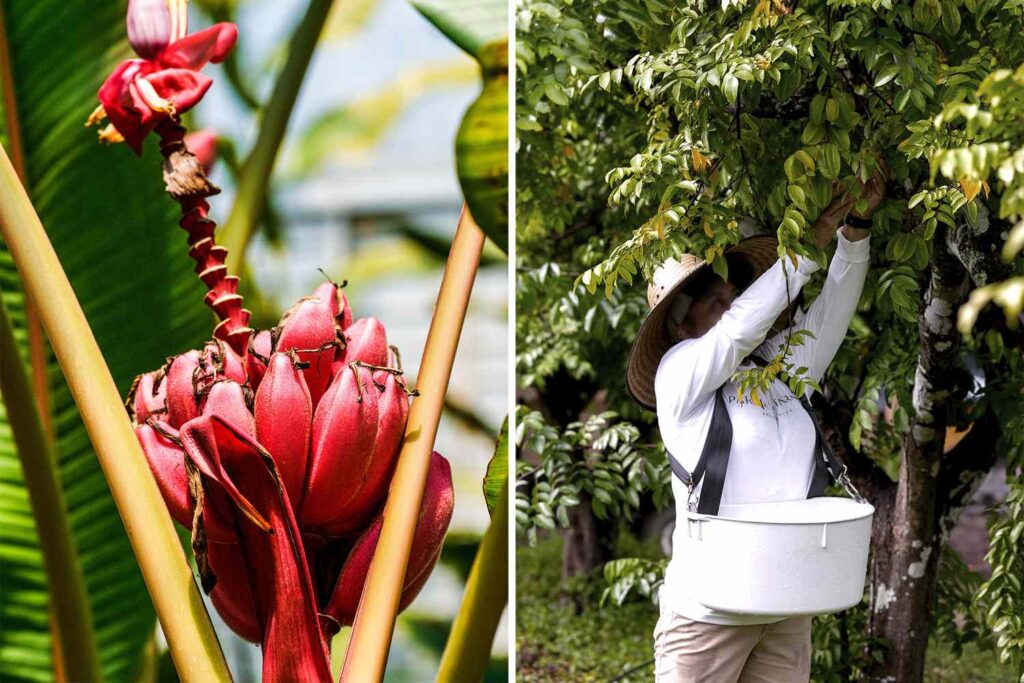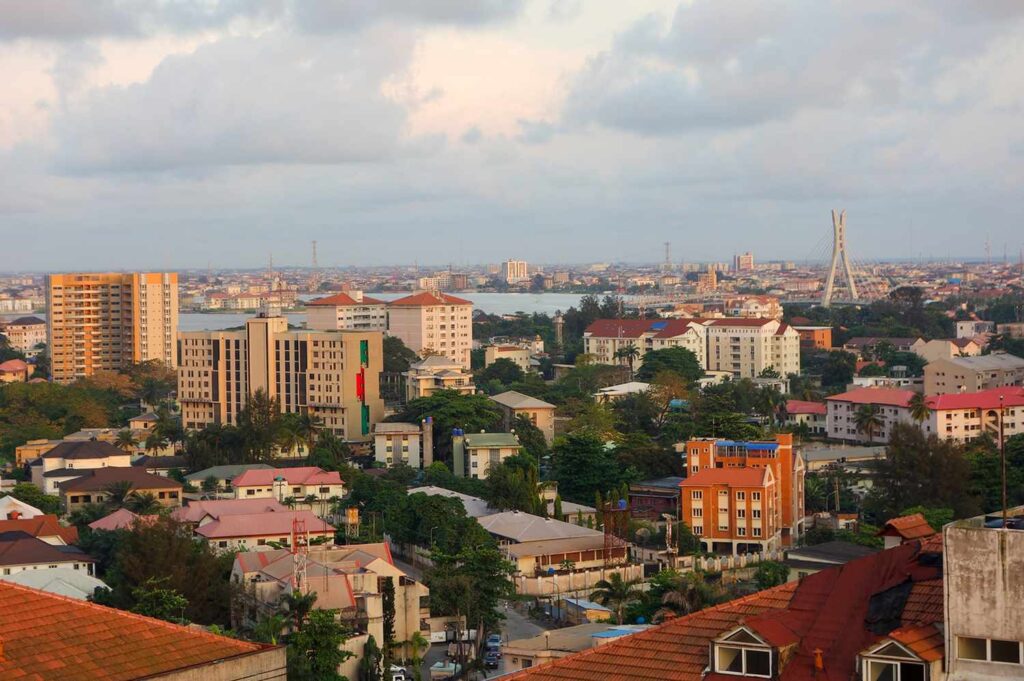:max_bytes(150000):strip_icc():format(jpeg)/TAL-fruit-and-spice-bananas-paradise-farms-harvester-HOMESTEADFRUIT1224-09d0fef9fb224e7dbb92c99e32150292.jpg)
Just an hour south of Miami, Nora Walsh finds a candyland of tropical fruits ripe for picking.
Veinte Cohol bananas are a small, fast-growing variety with a creamy texture and citrusy tang. They are rarely found outside of the Philippines. But at the Fruit & Spice Park, a botanical garden in Homestead, Florida, I came across a small grove of them, ready to be picked.
“We have 40 banana varieties,” said Philip Romero, a guide at the park. “These are more flavorful than your typical store-bought Cavendish banana. Everyone loves how petite they are.”
The Fruit & Spice Park was started in 1944 by Mary Heinlein, a gardener who wanted to show that the clay-rich soil and climate in this part of South Florida — a region known as the Redlands — could grow tropical fruits from around the world.
Today the garden, which is run by the Miami-Dade County parks department, grows more than 500 varieties of fruits, vegetables, spices, herbs, and nuts. And perhaps just as important, Homestead has seeded a community of farmers, grocers, restaurateurs, and even winemakers. Located about an hour’s drive from downtown Miami, the area is a juicy bazaar for rare produce.
Michael Dwyer/Alamy
I began my fruit loop on a sunny Saturday last spring, zipping around the 37-acre park in an electric golf cart. Plants are organized by region; Romero and I started in the Americas, pulling up to an eight-foot-tall Brazilian grape tree, known for the gumball-size purple berries that grow directly on its trunk. Romero plucked one for me to try: it tasted like a grape, but with the tartness of an apple and the spiciness of cinnamon.
As we wove through the park, Romero continued to point out a staggering variety of tropical-fruit plants: breadfruit, carambola, dragonfruit, guava, hog plum, loquat, lychee, monstera, mulberry, papaya, passion fruit, star apple, tamarind. When the 45-minute tour came to a close, Romero wanted me to sample one more thing. First, he gave me a wedge of gamboge, a yellow fruit from Southeast Asia that made my lips pucker. Next, I tasted a few red berries native to West Africa, then bit into the gamboge again. This time the gamboge tasted sweet. “That’s why the berries are called Miracle Fruit,” Romero said with a smile.
With the sweetness still lingering on my tongue, I drove south toward the Everglades, watching the flat landscape shift from small, family-owned farms to new town houses and gated subdivisions. The agricultural estates that remain — places like Berry Farm and Paradise Farms — offer guided tours and sell produce.
After about 15 minutes of driving, I arrived at Robert Is Here, a fruit stand started by Robert Moehling in 1959 — when he was all of six years old. When I visited, Moehling was indeed there, working the cash register as dozens of customers picked through heaps of mangoes, eggfruit, papayas, and passion fruit. There were also shelves of the farm’s house-made sauces, including wild pineapple salsa, guava jam, and peach butter.
I chatted with Robert’s son, Brandon, while I waited in line for a smoothie made with guanabana, a prickly green fruit. It tasted like a cross between a banana and pineapple. “We sell about 2,000 milkshakes a day on the weekend,” Brandon told me before giving me a slice of mamey sapote, a football-shaped fruit from Central America. It had a milky texture that reminded me of cheesecake, and it tasted like pumpkin pie, with a dash of strawberry and cinnamon. “I think I found my favorite new fruit,” I said.
From left: Emergent Media/Courtesy of Visit Florida; courtesy of the Greater Miami Convention and Visitors Bureau
My final stop for the day was Schnebly Redland’s Winery, which makes wine from tropical fruits like guava, passion fruit, and pineapple. Set on 30 acres, the estate has an eclectic mix of tiki huts, limestone waterfalls, koi ponds, and, at its center, a plantation-style mansion with a large tasting room.
There I met the owner, Peter Schnebly, at a circular oak bar. “One year, I had 40,000 pounds of avocados I couldn’t ship to a customer because they were slightly ripe, so I tried making wine with them,” Schnebly said as he poured me a glass directly from a steel tank. “It’s our second-best-selling wine today. The wine industry didn’t take us seriously at first, but now we have winemakers flying in from France who ship bottles home.”
We made our way to the hangar-size brewery, where Schnebly presented me with samples of a hard guava cider, a coconut blonde ale, and a spicy mango and habanero wheat beer. I was pleasantly surprised. I left the tasting room with a six-pack of guava cider, three bottles of lychee wine, and a newfound appreciation for Homestead’s abundance of exotic fruits — and the people who grow them.
Take Your Pick
The sunny weather and fertile soil of Homestead, Florida, make for a bounty of fruity attractions. Here are some highlights.
Fruit & Spice Park
A botanical garden that grows more than 500 varieties of fruits and vegetables.
Paradise Farms
A 17-acre organic farm that hosts tours and dinners.
Patch of Heaven Sanctuary
An ecological reserve that pairs meditative walks with fruit tastings.
Robert Is Here
A family-owned fruit and smoothie stand in operation since 1959.
Schnebly Redland’s Winery
A winery and brewery that ferments tropical fruits.
A version of this story first appeared in the December 2024 issue of Travel + Leisure under the headline “The Sweet Spot.”


